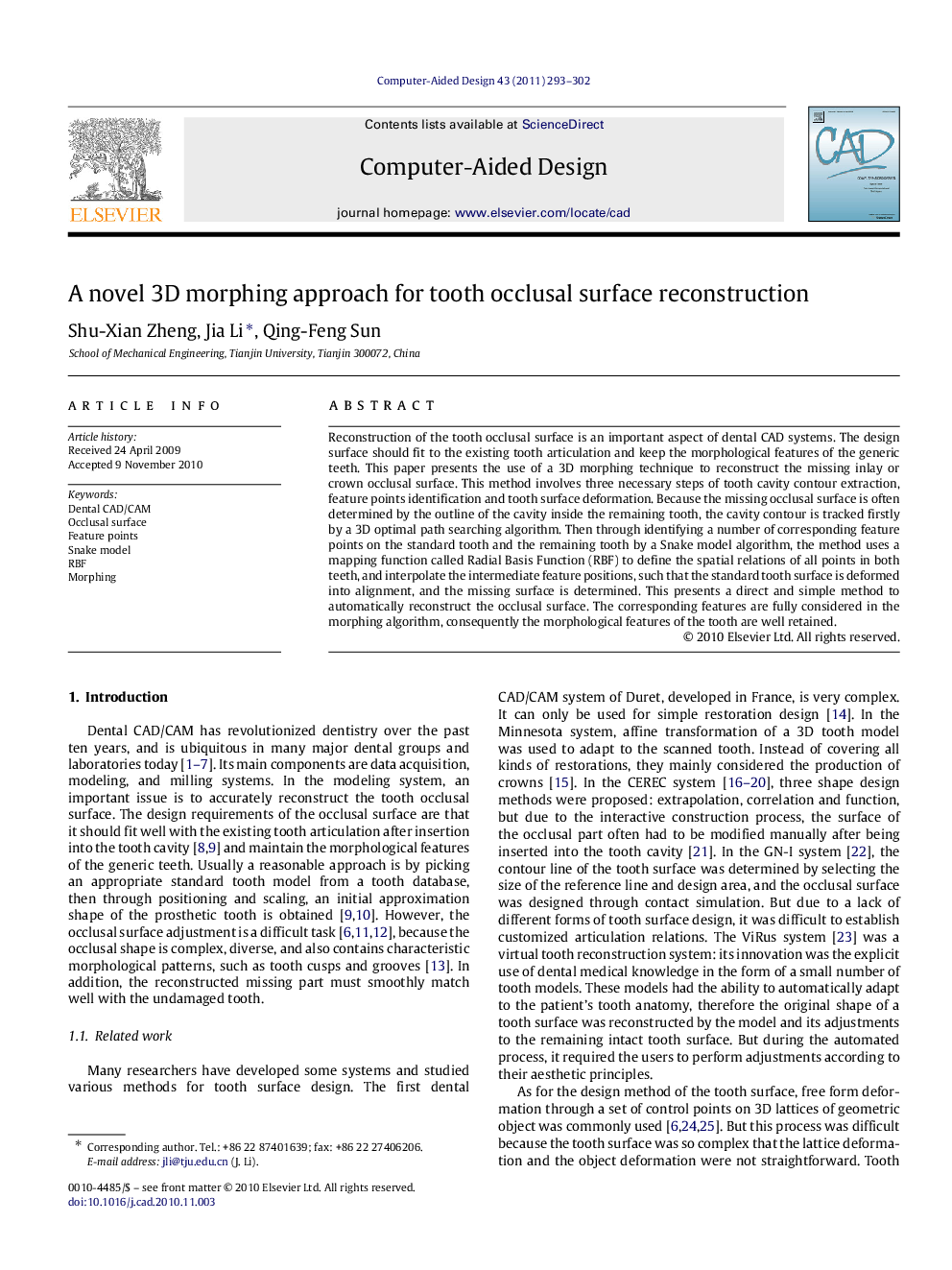| کد مقاله | کد نشریه | سال انتشار | مقاله انگلیسی | نسخه تمام متن |
|---|---|---|---|---|
| 440843 | 691290 | 2011 | 10 صفحه PDF | دانلود رایگان |

Reconstruction of the tooth occlusal surface is an important aspect of dental CAD systems. The design surface should fit to the existing tooth articulation and keep the morphological features of the generic teeth. This paper presents the use of a 3D morphing technique to reconstruct the missing inlay or crown occlusal surface. This method involves three necessary steps of tooth cavity contour extraction, feature points identification and tooth surface deformation. Because the missing occlusal surface is often determined by the outline of the cavity inside the remaining tooth, the cavity contour is tracked firstly by a 3D optimal path searching algorithm. Then through identifying a number of corresponding feature points on the standard tooth and the remaining tooth by a Snake model algorithm, the method uses a mapping function called Radial Basis Function (RBF) to define the spatial relations of all points in both teeth, and interpolate the intermediate feature positions, such that the standard tooth surface is deformed into alignment, and the missing surface is determined. This presents a direct and simple method to automatically reconstruct the occlusal surface. The corresponding features are fully considered in the morphing algorithm, consequently the morphological features of the tooth are well retained.
Research highlights
► The three steps of reconstruction is an automatic process with less manual intervention.
► One-to-one mapping between points provides topological equivalence of two teeth.
► Using pairs of mapping feature points and RBF, the surface deformation is more reasonable.
► The reconstruction process is simple and straightforward, it improves the design efficiency.
Journal: Computer-Aided Design - Volume 43, Issue 3, March 2011, Pages 293–302